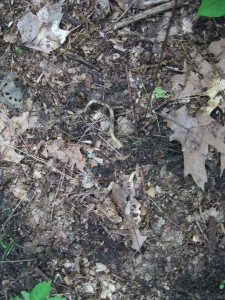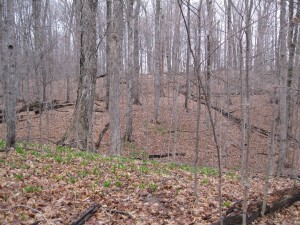[This post appeared in briefer form as a Letter to the Editor of the Kalamazoo Gazette 12 September 2011.]

Automobiles are a less serious contributor to ozone production since catalytic converters have been required. Photo in downtown Milwaukee, WI by Richard Brewer
President Obama made two serious mistakes early this fall. First, he told the Environmental Protection Agency to withdraw new, stronger, standards for ozone levels in the lower atmosphere that were intended to replace the standards held over from the Bush administration. Ozone (O3) is an atmospheric pollutant dangerous to human health because it’s highly reactive in lung tissues. It’s involved in various respiratory diseases but evidently also in other sorts of human pathology; for example, it’s believed to contribute to the development of atherosclerosis. But ozone in the lower atmosphere also has many bad effects besides just our own health and life span. It damages plants, lowering photosynthesis and growth and is implicated in die-offs of forest trees.
Ozone is produced in the lower atmosphere by reactions between nitrogen oxides and volatile organic compounds in the presence of sunlight. The nitrogen oxides and volatile organic compounds come mostly from power plants, various sorts of factories, automobiles, gasoline vapor, and chemical solvents.
There are interactions between ozone production and temperature and ozone effects and temperature, such that we get more ozone produced and stronger effects when temperatures are high. These are one of many kinds of interactions that may make global warming an even greater calamity than most of the early predictions claimed.
President Obama’s second mistake was his reason for turning down the new, science-based ozone recommendations. He said he wanted to reduce regulatory burdens and regulatory uncertainty. But tough regulations strictly enforced are what can make capitalism work. The last few years have shown us repeatedly how things go astray when politicians manage to weaken and thwart regulations. Weakened regulations together with the unwillingness of federal agencies to enforce existing regulations were the main causes of the financial fiasco of 2007-2009 and the recession that came with it.
Michigan has been on the deregulation bandwagon right along. In the DooDah parade of deregulation, it may even have been ahead of the bandwagon. We had a governor a few years ago whose slogan was “Less enforcement, more compliance.” Such a proposition if it were sincere would be fatuous, but considering everything, just calling it preposterous or ludicrous will probably have to serve.
President Obama seems to have accepted the argument of the extreme political right that there is a conflict between “the environment” and “the economy.” For most Americans, the right wing lost on that issue 30 or 40 years ago. Some corporations tell us if the nation doesn’t give them lax environmental rules they’ll take their jobs overseas. Since such corporations show little national loyalty, some have.
But the balance sheet we need to look at is the overall gain to our nation in terms of clean air and water, healthy citizens, healthy communities, and healthy ecosystems compared with the cost of meeting any given environmental standard. Time after time we’ve seen that the costs of meeting new standards turns out lower than the company’s forecast, that new jobs are created connected with the improved technology needed, and that the overall national cost/benefit ratio is heavily in favor of the tougher standards.
Anyone who’s been paying attention anytime these past 40 years knows that. Why doesn’t the President?
President Obama has another environmental decision coming up soon. This is to accept or reject the proposed Keystone XL pipeline that would carry a form of crude oil processed from Canadian tar sands from Alberta to the U.S. Gulf Coast. I hope to write more about this a little later.
















